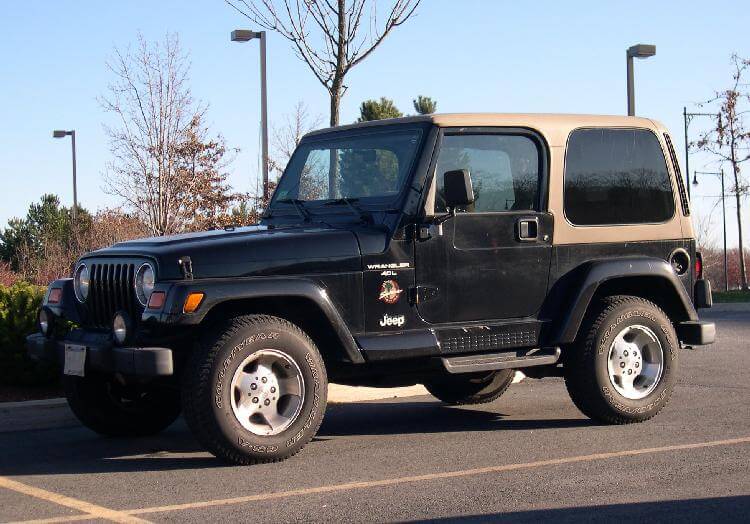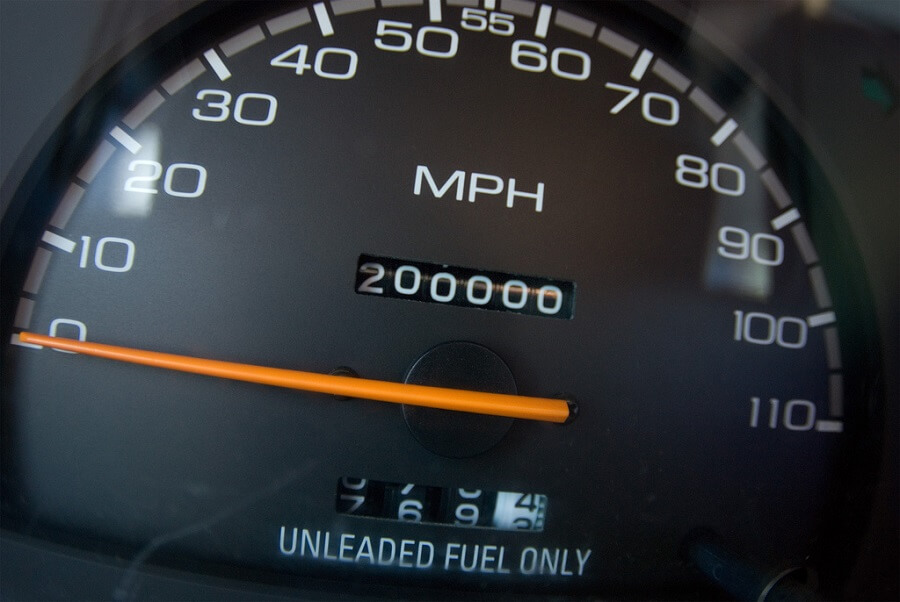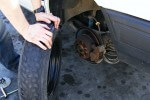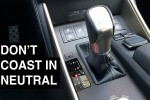How important would it be to make 4×4 checks every time? Well, if you know how the free-wheeling hub works then you are good to go. In that case, I do not expect that selecting transfer gear should pose a huge challenge to you. Even with a brilliant understanding of the 4×4 system, you had better keep some checks in mind. In fact, you should undertake the checks before you are sure to safely go on any drive. In the section that follows, you will learn and appreciate the various 4×4 checks you should always keep in mind.

The Jeep Wrangler is a favorite for many people
Image source: http://en.wikipedia.org/wiki/Four-wheel_drive
Always avoid 4WD when on rough surface
Whenever drivers spot dirt in front, impulsively, they engage their 4WD out of habit. Even though this is an impulsive reaction, you would want to maintain a 2WD in rough surface so long as you can manage it. You would want to avoid any unnecessary wear and tear in any driving situation by ensuring that you do not lock the center differential if you engage 4WD. Otherwise, avoid 4WD if you can manage comfortably with 2-wheel driving.
Always disengage 4WD in vehicles with free manual hubs
If you want to maintain your vehicle then you should always remember to disengage 4WD whenever you reach rough surface if you are driving a vehicle with manual controls. Engaged 4WD can easily damage your machine by increasing unnecessary wear and tear. Besides, your vehicle consumes more fuel whenever it is engaged in 4WD. This is unnecessary cost that you can easily cut.
Maintain 80kmph speed on corrugated regions of the road
Some drivers are lost for choice when they face a corrugated road surface. For those that choose to slow down on their driving, boredom finally gets the better of them while the vehicle has to endure wear and tear. For the drivers that choose to drive fast, they are likely to damage the vehicle through increased wear and tear while increasing discomfort on the rough. Either way, somehow, you will face discomfort or wear out your car. However, if you maintain 80kmph speed on such areas where visibility is good, you can cut heavily on both boredom and the rate of wear and tear of your vehicle. At this speed coupled with great visibility, your vehicle tends to float hence a smooth ride.
Maintain high speed when driving on sand
Driving at higher speed on sand tends to achieve floatation, which is huge factor of successful driving. However, you would want to check if your pressure can take you through the road ahead. Consider other factors like the size of load you are carrying and the distance to be covered. With short distances, you would want to worry less about adding pressure to your car tires. Sometimes, you can be forced to reduce the pressure in the tires to low levels if you realize that the ride is likely to boggle you.






